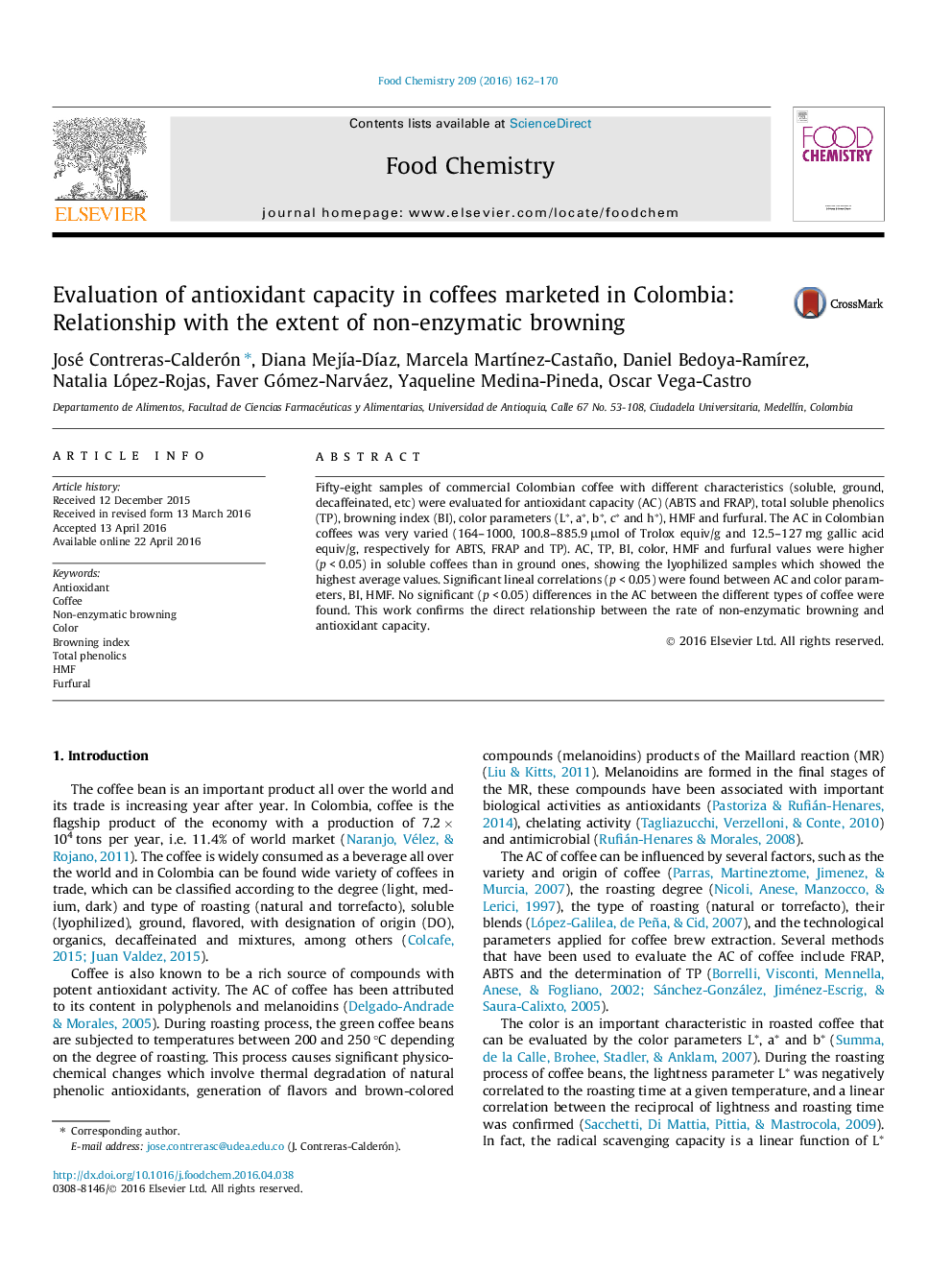| Article ID | Journal | Published Year | Pages | File Type |
|---|---|---|---|---|
| 1183133 | Food Chemistry | 2016 | 9 Pages |
•58 samples of commercial Colombian coffee with different characteristics were studied.•Antioxidant capacity (AC), browning index (BI), color, HMF and furfural were examined.•Soluble coffees presented higher AC, color, BI, HMF and furfural than ground coffees.•AC has a positive and significant correlation with non-enzymatic browning.•No significant differences exist in AC regarding to different coffee characteristics.
Fifty-eight samples of commercial Colombian coffee with different characteristics (soluble, ground, decaffeinated, etc) were evaluated for antioxidant capacity (AC) (ABTS and FRAP), total soluble phenolics (TP), browning index (BI), color parameters (L∗, a∗, b∗, c∗ and h∗), HMF and furfural. The AC in Colombian coffees was very varied (164–1000, 100.8–885.9 μmol of Trolox equiv/g and 12.5–127 mg gallic acid equiv/g, respectively for ABTS, FRAP and TP). AC, TP, BI, color, HMF and furfural values were higher (p < 0.05) in soluble coffees than in ground ones, showing the lyophilized samples which showed the highest average values. Significant lineal correlations (p < 0.05) were found between AC and color parameters, BI, HMF. No significant (p < 0.05) differences in the AC between the different types of coffee were found. This work confirms the direct relationship between the rate of non-enzymatic browning and antioxidant capacity.
